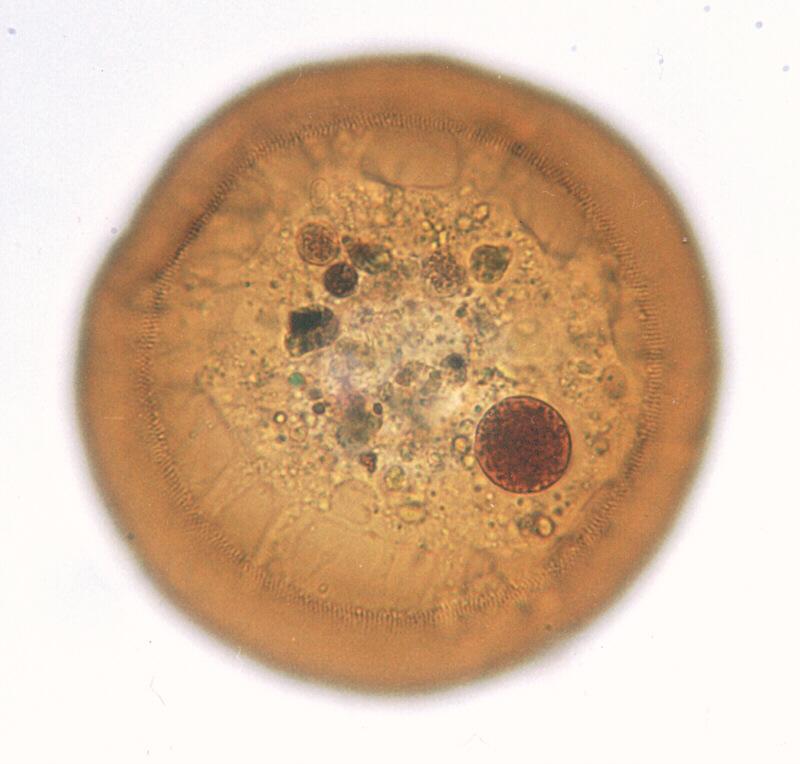|
| Query: protozoa | Result: 17th of 36 | |
Protozoa - Amoebae - Arcella once more
| Subject: | Protozoa - Amoebae - Arcella once more
| | Poster: | Schmode (schmode@vossnet.de)
| |

| File size : 56950 bytes
File date : 2001:01:26 17:54:01
Resolution: 800x764
Jpeg process : Baseline
Posted Newsgroups: alt.binaries.pictures.animals
Posted Date: Sun, 31 May 1998 02:06:21 +0200 |
Hi again,
sorry for being a bit late with my Protozoa postings at the moment.
Professional commitments leave me very little time for scanning and
posting.
I already showed you a pic of an Arcella which is, as you may remember,
an amoeba with a protective shell. I promised you to post another image
which relieves some of the secrets of that shell - that is what you are
seeing right now. By the way, the shell is not collected from sand
grains just lying around Arcella's way (there are some other amoebae
which get their shell that way!) but made from a secretion process. I
haven't been able to look up recently how exactly that process works;
e-mail me in case you want to know, I'll find out.
Now please take a closer look at the shot. First there is a wonderful
look at the protoplasma. You can see clearly that Arcella has had a good
dinner of several algae species; their colour spectrum reaches from
light-green to dark-brown representing the progredience of digestion as
well as the diversity of Arcella'a menu. The shot nicely shows the way
Arcella's body is attached to the shell by tentacle-like protoplasma
arms; these are called pseudopodia being typical to amoebae with a shell
as well as to "naked" ones. Amoeba, having no cilia to move, just sticks
out a pseudopodium and lets the rest of its protoplasma flow into it.
Having no mouth it even swallows its food by just flowing around it with
some pseudopodia.
If you watch the shell there seems to be a rough ring in the outer third
of it. This is no real ring but the layer of the shell being exactly in
focus of the microscope. If you look close you will notice there is a
symmetric structure; in fact, the shell is made up of hexagonal
sub-units just like honeycombs providing maximum strength at the least
possible weight. The shell, though, is almost transparent; the crisp
sight on the protoplasma would not have been possible otherwise.
Still more to come. It may take some time, but I'll do my very best.
Have a nice weekend,
Ralf
name="Arcella2.jpg"
|
Comments |
|---|
| | carr |
|
| what do Arcellas move with like a cilia or a flagella or a pseudopodia? Please respond quikly! |
| | carr |
|
| please some one respnd @ my question |
^o^
Animal Pictures Archive for smart phones
^o^
|
|
|

